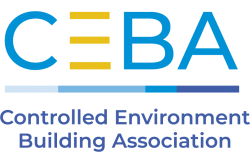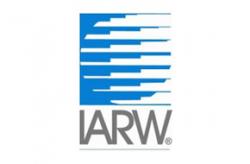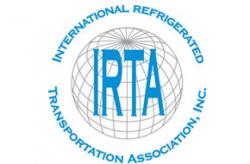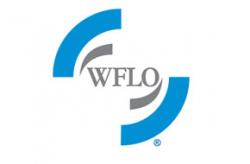Biden Begins With Focus On COVID
GCCA expands government relations program and launches Advocacy Fund.
Joe Biden began his presidency on January 20, 2021, by signing a series of Executive Orders impacting a wide range of policy issues. In the first 10 days of his administration, Biden took 42 individual executive actions, many of which reversed policies instituted by former President Trump.
Response to the COVID-19 pandemic is one of the major areas of actions that will have an impact on companies in the cold chain.
National COVID Strategy
President Biden made the COVID-19 response a signature issue on the campaign trail, and since taking office, has moved quickly to take actions related to the pandemic. On January 21, President Biden released “The National Strategy for the COVID-19 Response and Pandemic Preparedness.”
The 200-page document outlines a series of policies and actions intended to accelerate the nation’s response to COVID by pursuing the following goals and key actions:
Goal 1: Restore trust with the American people.
Key Actions:
- Establish a national COVID-19 response structure where decision-making is driven by science and equity.
- Conduct regular expert-led, sciencebased public briefings.
- Publicly share data around key response indicators
- Engage the American people.
- Lead science-first public health campaign.
Goal 2: Mount a safe, effective, comprehensive vaccination campaign.
Key Actions:
- Ensure the availability of safe, effective vaccines for the American public.
- Accelerate getting shots into arms and get vaccines to the communities that need them most.
- Create as many venues as needed for people to be vaccinated.
- Focus on hard-to-reach and high-risk populations.
- Fairly compensate providers and states and local governments for the cost of administering vaccinations.
- Drive equity throughout the vaccination campaign and broader pandemic response.
- Launch a national vaccinations public education campaign.
- Bolster data systems and transparency for vaccinations.
- Monitor vaccine safety and efficacy.
- Surge the health care workforce to support the vaccination effort.
Goal 3: Mitigate spread through expanding masking, testing, treatment, data, workforce and clear public health standards.
Key Actions:
- Implement masking nationwide by working with governors, mayors and the American people.
- Scale and expand testing.
- Prioritize therapeutics and establish a comprehensive, integrated COVID-19 treatment discovery and development program.
- Develop actionable, evidence-based public health guidance.
- Expand the U.S. public health workforce and increase clinical care capacity for COVID-19.
- Improve data to guide the response to COVID-19.
Goal 4: Immediately expand emergency relief and exercise the Defense Production Act.
Key Actions:
- Increase emergency funding to states and bolster the Federal Emergency Management Administration (FEMA) response.
- Fill supply shortfalls by invoking the Defense Production Act.
- Identify and solve urgent COVID-19 related supply gaps and strengthen the supply chain.
- Secure the pandemic supply chain and create a manufacturing base in the United States.
- Improve distribution and expand availability of critical materials.
Goal 5: Safely reopen schools, businesses and travel, while protecting workers.
Key Actions:
- Implement a national strategy to support safely reopening schools.
- Support safe operations at child care centers and at-home providers.
- Support equitable reopening in higher education.
- Protect workers and issue stronger worker safety guidance.
- Provide guidance and support to safely open businesses.
- Promote safe travel.
Goal 6: Protect those most at risk and advance equity, including across racial, ethnic and rural/urban lines.
Key Actions:
- Establish the COVID-19 Health Equity Task Force.
- Increase data collection and reporting for high-risk groups.
- Ensure equitable access to critical COVID-19 PPE, tests, therapies and vaccines.
- Expand access to high-quality health care.
- Expand the clinical and public health workforce, including community-based workers.
- Strengthen the social service safety net to address unmet basic needs.
- Support communities most at risk for COVID-19.
Goal 7: Restore U.S. leadership globally and build better preparedness for future threats.
Key Actions:
- Restore the U.S. relationship with the World Health Organization and seek to strengthen and reform it.
- Surge the international public health and humanitarian response.
- Restore U.S. leadership to the international COVID-19 response and advance global health security and diplomacy.
- Build better bio-preparedness and expand resilience for biological threats As a part of the national strategy, Biden has signed the Executive Order on Protecting Worker Health and Safety. The order directs the Occupational Safety and Health Administration (OSHA) to issue revised guidance to employers on workplace safety during the COVID-19 pandemic as well as consider whether OSHA should issue an emergency temporary standard (ETS) on COVID-19. OSHA has until March 15, 2020, to determine whether to institute an ETS. The order also includes a review of OSHA’s enforcement efforts and the launch of a national program to focus OSHA enforcement efforts related to COVID-19 on violations that put the largest number of workers at serious risk or are contrary to anti-retaliation principles. OSHA released its updated guidance on January 29, 2020, and provides stronger direction for employers to take to protect employees from COVID in the workplace.
- The guidance describes several essential elements in a prevention program, such as conducting a hazard assessment; identifying control measures to limit the spread of the virus; adopting non-punitive absence policies that allow potentially infected workers to stay home; communicating COVID-19 policies and procedures in a language workers understand; and implementing protections from retaliation for workers who raise COVIDrelated concerns. The guidance builds on existing recommendations developed by OSHA and the Centers for Disease Control (CDC) but does not constitute an enforceable standard. However, it is expected that this guidance will likely be the basis of an ETS that would establish enforceable regulatory requirements that employers must follow. GCCA members are strongly encouraged to review the new guidance and be prepared to document and demonstrate the actions they are taking to protect workers from COVID-19.
GCCA Launches Advocacy Fund
With the inauguration of President Biden and Congress newly installed, GCCA is moving to expand its government affairs program. In January, GCCA welcomed the addition of Jordan Bonfitto as Director of Government Affairs. Bonfitto comes to GCCA from the United States Department of Agriculture (USDA) where he most recently served as Director of External and Intergovernmental Affairs. He also served as a policy advisor on agriculture issues at the White House’s National Economic Council. Bonfitto will play a key role in GCCA’s expanded legislative advocacy.
GCCA has also added key positions in marketing and communications that will assist in the association’s overall efforts in advocating on behalf of the industry. Rodgers will serve as the new Vice President of Public Relations & Industry Affairs. Rodgers most recently held the position of Deputy Communications Director at USDA, where she worked closely with the Secretary of Agriculture. Rachael Oury joins GCCA as Senior Manager of Industry Promotion and comes to the association from the Department of Energy, where she was Senior Communications & Digital Specialist.
Oury also worked for the Transportation Intermediaries Association, so she brings industry and association experience to GCCA. In addition to bringing in new team members, GCCA is also launching a strategic initiative – the Advocacy Fund – that will enable the association to expand advocacy efforts on behalf of the industry.
The Advocacy Fund will support increased efforts to promote and protect the cold chain including:
- Creating a new virtual platform for communications with elected officials in the United States, Canada and Australia.
- Expanding GCCA participation and leadership in coalitions.
- Participating with partners in legal challenges to problematic regulations.
- Expanded GCCA presence on Capitol Hill.
- Setting up facility tours for members’ congressional representatives.
- Developing economic impact studies to better communicate the importance of the industry to policy makers and the general public.
GCCA is excited to bring these new resources to bear in light of the opportunities and challenges presented with the new administration and Congress. For more information about GCCA’s expanded government affairs program or to participate in the new Advocacy Fund, please contact me.
LOWELL RANDEL is Senior Vice President, Government and Legal Affairs at GCCA.
Source: Cold Facts Mar/Apr 2021 issue



